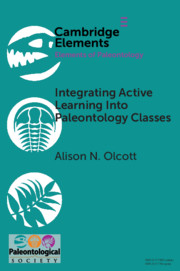Element contents
Integrating Active Learning into Paleontology Classes
Published online by Cambridge University Press: 30 October 2018
Summary
Keywords
- Type
- Element
- Information
- Series: Elements of PaleontologyOnline ISBN: 9781108681698Publisher: Cambridge University PressPrint publication: 15 November 2018
References
- 21
- Cited by



